A gunite pool is a luxurious addition to any property, offering a versatile space for relaxation, entertainment, and exercise. However, circumstances may arise that prompt pool owners to consider altering the size of their pool. Whether it’s to accommodate changing needs, enhance the pool area, or address structural concerns, the question remains: Can you change the size of a gunite pool once it’s in place?
In this article, we delve into the intricacies of altering the size of a gunite pool. We’ll explore the feasibility, processes, and factors to consider when contemplating a size modification. By understanding the possibilities and limitations, you can make informed decisions about your gunite pool and ensure that any alterations align with your vision and practical requirements. Join us as we navigate the world of gunite pools and their potential for transformation.
Table of Contents
- 1 Can You Change the Size of Gunite Pool
- 2 Should You Change the Size of Your Gunite Pool: Factors to Consider
- 3 Why Change the Size of Your Gunite Pool
- 4 Increasing the Size of Your Gunite Pool: Key Factors to Take into Account
- 5 Reducing the Size of Your Gunite Pool: Important Considerations
- 6 Step-by-Step Guide: Changing the Size of Your Gunite Pool
- 7 Potential Challenges in Pool Size Modifications
- 8 Understanding the Costs Involved in Resizing Your Gunite Pool
- 9 Time Frame for Resizing Your Gunite Pool
- 10 Conclusion
- 11 Frequently Asked Questions (FAQs)
Can You Change the Size of Gunite Pool
Absolutely, the size of a gunite pool can be changed, but it’s a complex process that involves several factors. Altering the size of a gunite pool typically requires draining the pool, demolishing and removing the existing structure, adjusting the surrounding area, and then constructing the new pool size.
This process involves skilled professionals, such as pool contractors and engineers, to ensure the structural integrity, safety, and functionality of the modified pool. It’s essential to consider factors like property space, permits, budget, and the extent of modifications needed. Prior planning and expert guidance are crucial for successfully changing the size of a gunite pool.
Should You Change the Size of Your Gunite Pool: Factors to Consider
The question of whether to change the size of your gunite pool is a significant consideration that involves various factors. While altering the size of a gunite pool is indeed possible, it’s essential to weigh the pros and cons before making a decision.
Assessing Your Needs and Goals: Before proceeding with any modifications, it’s crucial to evaluate why you want to change the pool’s size. Are you looking to accommodate a larger number of swimmers, or do you want a more compact pool to free up space in your backyard? Understanding your goals will help determine if a size change is the right move.
Space Constraints: Consider the available space in your property. If your yard has limited room, resizing the pool might be challenging. Depending on the dimensions you’re aiming for, you might need to compromise on other outdoor amenities or make structural adjustments to the surrounding area.
Budget Considerations: Changing the size of a gunite pool involves a considerable investment. The costs can include demolition, excavation, construction, and landscaping, among others. Ensure that your budget aligns with the modifications you have in mind. It’s advisable to get quotes from reputable pool contractors to estimate the expenses accurately.
Structural Feasibility: Resizing a gunite pool requires skilled engineering and construction work. It’s essential to work with professionals who can assess the structural integrity of the existing pool and ensure that any modifications are carried out safely. Structural alterations might also involve obtaining permits and adhering to local regulations.
Impact on Property Value: Consider the potential impact of resizing the pool on your property’s value. While a larger pool might be appealing to some buyers, others might prefer a spacious yard. It’s wise to consult with real estate professionals to understand how the change could affect your property’s marketability.
Aesthetics and Landscaping: Changing the pool’s size could also impact the overall aesthetics of your outdoor space. The pool’s position, landscaping, and surrounding features might need to be adjusted to harmonize with the new dimensions. Ensure that the visual aspect aligns with your design preferences.
Why Change the Size of Your Gunite Pool
Deciding to change the size of your gunite pool is a significant step that can bring about various benefits. Here are some common reasons why pool owners contemplate resizing their gunite pools:
Family Dynamics: As families evolve, so do their needs. If your family has grown or if you frequently entertain guests, you might want a larger pool to accommodate more swimmers comfortably. On the other hand, if your children have grown up and moved out, a smaller pool might be more suitable for your current lifestyle.
Space Optimization: Your outdoor space might have changed over the years. If you find that your pool takes up too much of your yard or if you want to create additional recreational areas, resizing the pool could help optimize your outdoor space.
Aesthetic Enhancements: Perhaps you’ve had a change in design preferences or landscaping goals. Adjusting the size of your pool can offer a chance to enhance the overall aesthetics of your backyard, aligning it with your current vision.
Energy Efficiency: Larger pools generally require more water, chemicals, and energy to maintain. If you’re looking to reduce your pool’s environmental impact and operational costs, downsizing might be a practical solution.
Maintenance Efforts: Maintaining a pool involves regular cleaning, chemical balancing, and upkeep. If your current pool size feels like a maintenance burden, a smaller pool could make it more manageable and free up time for other activities.
Aging in Place: If you’re planning to stay in your current home as you age, you might consider resizing the pool to better align with your future needs. A smaller pool could be more accessible and require less physical effort to enjoy.
Changing Lifestyles: Your recreational preferences might have shifted since the pool was originally installed. If you now prefer relaxation over vigorous swimming or if you’ve adopted new aquatic hobbies, adjusting the pool size can cater to your evolving interests.
Property Upgrades: Undertaking renovations or improvements to your property might prompt you to reconsider your pool’s dimensions. A size change can complement other upgrades and create a more harmonious outdoor environment.
Budget Considerations: Larger pools tend to involve higher maintenance and operational costs. If you’re looking to reduce ongoing expenses, downsizing the pool can help you achieve your financial goals.
Structural Concerns: In some cases, structural issues or wear and tear might prompt a pool owner to consider resizing. Addressing these concerns during a size change can ensure the pool’s long-term durability.
Increasing the Size of Your Gunite Pool: Key Factors to Take into Account
Expanding the size of your gunite pool can be an exciting endeavor, but it’s essential to consider several factors before embarking on this project. Here are the key elements to keep in mind when contemplating an increase in your pool’s dimensions:
- Available Space: Assess the available space in your yard. Expanding the pool’s size requires adequate room without compromising other outdoor features or encroaching on property boundaries.
- Property Regulations and Permits: Check local regulations and obtain necessary permits before making any changes to your pool’s size. Municipal guidelines might dictate setback distances, pool coverage, and other factors that could impact the enlargement process.
- Structural Feasibility: Consult with a professional pool contractor or engineer to determine if your pool’s current structure can support an increase in size. Structural modifications might be necessary to ensure the safety and integrity of the pool.
- Surrounding Landscape: Consider how expanding the pool might affect your landscaping, hardscaping, and other outdoor amenities. Adjustments might be needed to maintain a harmonious and visually appealing outdoor space.
- Budget Allocation: Increasing the size of a gunite pool involves costs such as excavation, material, labor, and potential landscaping adjustments. Create a comprehensive budget that covers all aspects of the project to avoid unexpected expenses.
- Design and Aesthetics: Think about how the enlarged pool will fit into your overall design vision. Ensure that the new dimensions align with your aesthetic preferences and enhance the overall look of your property.
- Filtration and Circulation Systems: Expanding the pool’s size may necessitate adjustments to the filtration and circulation systems to ensure adequate water quality and circulation throughout the larger pool.
- Water and Energy Consumption: A larger pool requires more water to fill and more energy to operate. Consider the impact on your utility bills and the environment, and explore energy-efficient options if possible.
- Project Timeline: Understand that expanding a pool’s size is not an overnight process. The project timeline can vary based on factors such as weather, availability of contractors, and any unexpected challenges that arise.
- Use and Functionality: Consider how the increased pool size will affect its use. Will it cater to larger gatherings, provide more swimming space, or accommodate specific aquatic activities? Ensure that the expansion aligns with your intended functionality.
- Professional Expertise: Enlisting the services of experienced pool professionals is crucial. Work with reputable contractors who have a track record of successful pool expansions and renovations.
- Potential Disruptions: Be prepared for temporary disruptions to your outdoor space during construction. Plan for alternative arrangements if the pool area becomes inaccessible during the enlargement process.
Reducing the Size of Your Gunite Pool: Important Considerations
When contemplating a reduction in the size of your gunite pool, there are several critical factors to take into account. While downsizing a pool can offer various benefits, it’s essential to approach the process thoughtfully. Here are the key considerations when considering a decrease in your pool’s dimensions:
- Desired Size: Determine the new size you envision for your pool. Assess your needs and preferences to ensure that the reduced dimensions will still fulfill your intended purposes.
- Structural Assessment: Consult with a professional pool contractor or engineer to assess the structural feasibility of downsizing. Changes to the pool’s dimensions might require adjustments to the pool shell and surrounding structure.
- Property Layout: Consider how a smaller pool will fit within your existing property layout. Ensure that the reduced pool size complements your outdoor space and doesn’t create an imbalance.
- Aesthetic Harmony: Reflect on how the downsized pool will look in relation to your landscaping and other outdoor features. Make sure that the new dimensions maintain a visually appealing and cohesive design.
- Budget Allocation: While reducing pool size might seem cost-effective, it’s essential to budget for potential expenses. These can include demolition, removal of excess materials, and any necessary landscaping adjustments.
- Permits and Regulations: Check local regulations and obtain the required permits for altering your pool’s size. Compliance with zoning laws and building codes is crucial to avoid legal issues.
- Water and Energy Savings: A smaller pool requires less water to fill and lower energy consumption for maintenance. Factor in the potential savings in water and energy costs when evaluating the financial implications of downsizing.
- Filtration and Circulation Systems: Assess whether the existing filtration and circulation systems can effectively accommodate the reduced pool size. Modifications might be necessary to ensure proper water quality and circulation.
- Functionality and Use: Consider how the downsized pool will function for your intended use. Ensure that the smaller pool still meets your recreational and relaxation needs.
- Design Modification: Updating the pool’s design may be necessary to align with the new dimensions. This can include adjusting the shape, depth, and any associated features like steps or benches.
- Professional Guidance: Work with experienced pool professionals who specialize in alterations and renovations. Their expertise will be valuable in ensuring that the downsizing process is executed seamlessly.
- Timeline and Disruption: Understand that modifying a pool’s size takes time, and your outdoor space might be temporarily disrupted during the process. Plan accordingly to accommodate any inconveniences.
- Future Property Plans: Consider your long-term plans for the property. Will a smaller pool still align with your future goals and potential resale value?
- Waste Management: Dispose of any excess materials, such as removed pool components, in an environmentally responsible manner.
Step-by-Step Guide: Changing the Size of Your Gunite Pool
Changing the size of a gunite pool is a complex process that requires careful planning, professional expertise, and adherence to safety standards. If you’re considering altering your pool’s dimensions, follow this step-by-step guide to ensure a successful and seamless transition:
Step 1: Determine Your Goals and Needs
Before embarking on any pool size change, define your objectives clearly. Are you looking to accommodate more swimmers, create more space in your yard, or enhance the pool’s aesthetics? Understanding your goals will guide the entire project.
Step 2: Consult with Professionals
Engaging professionals with expertise in pool modifications is essential. Pool contractors and engineers can assess the feasibility of your goals, offer design suggestions, and guide you through the technical aspects of resizing.
Step 3: Obtain Necessary Permits
Changing the size of a pool often requires permits from local authorities. These permits ensure that your modifications adhere to safety and zoning regulations. Failure to obtain the required permits can lead to legal complications.
Step 4: Develop a Comprehensive Plan
Work closely with your pool contractor to create a detailed plan for the project. This plan should encompass design changes, structural modifications, required equipment upgrades, and a timeline for each phase.
Step 5: Drain the Pool
Before any work can begin, the pool must be drained entirely. This step ensures a safe working environment for subsequent construction phases.
Step 6: Demolition and Removal
For those increasing the pool size, this involves breaking down the existing pool structure to create space for expansion. This process might include removing the gunite shell, excavating additional soil, and disposing of excess materials responsibly.
Step 7: Structural Adjustments
If you’re enlarging the pool, structural adjustments are crucial. This might involve reinforcing the existing pool shell or constructing new structural elements to support the larger size while maintaining safety and stability.
Step 8: Modify Filtration and Circulation Systems
With the pool size changed, the filtration and circulation systems must be modified to ensure proper water quality and circulation throughout the new dimensions. This might involve upgrading pumps, filters, and plumbing.
Step 9: Construct the New Pool
Following the approved design plan, construct the new pool. This process includes forming the gunite shell, adding interior finishes, and incorporating any additional features like steps or ledges.
Step 10: Landscaping and Aesthetic Enhancements
Align the landscaping with the resized pool to maintain an aesthetically pleasing outdoor space. This might include adjusting plantings, pathways, lighting, and hardscape elements to complement the new pool size.
Step 11: Fill and Balance the Water
Once construction is complete, fill the pool with water and balance the water chemistry. Proper water chemistry ensures a safe and enjoyable swimming environment.
Step 12: Final Inspections
Schedule final inspections with relevant authorities to verify that the pool modifications comply with local building codes and safety standards.
Potential Challenges in Pool Size Modifications
Changing the size of your gunite pool comes with its fair share of challenges, but with careful planning and expert guidance, these hurdles can be overcome. Here are some potential challenges you might encounter during the process and the corresponding solutions to address them:
Challenge: Structural Considerations
Solution: Increasing or decreasing the size of the pool can affect its structural integrity. Work closely with a pool contractor or engineer to assess the impact of size changes and implement necessary structural modifications to ensure stability and safety.
Challenge: Design Integration
Solution: Adjusting the pool’s size might require changes in the design and layout of the pool area. Collaborate with a landscape architect or designer to create a harmonious layout that integrates the resized pool with the surrounding landscape and features.
Challenge: Regulatory Approvals
Solution: Obtain all required permits and approvals from local authorities before starting any work. Collaborate with your pool professional to ensure that your project aligns with zoning, building codes, and safety regulations.
Challenge: Budget Overruns
Solution: Proper budgeting is essential. Work with your pool contractor to develop a comprehensive budget that accounts for all aspects of the project, including unforeseen challenges. Having a contingency fund can help cover unexpected costs.
Challenge: Project Timeline
Solution: Changing a pool’s size is not a quick process. Create a realistic timeline with your pool contractor that considers factors like weather, permit processing, and any potential delays. Communication is key to managing expectations.
Challenge: Landscaping Adjustments
Solution: Altering the pool’s size might require changes to the surrounding landscape. Plan for landscaping adjustments and work with professionals to ensure the new layout complements the resized pool and enhances its aesthetics.
Challenge: Equipment Compatibility
Solution: If you’re changing the pool size significantly, existing filtration and circulation equipment might not be sufficient. Collaborate with pool professionals to evaluate and upgrade the necessary systems to accommodate the new dimensions.
Challenge: Water and Energy Usage
Solution: Larger pools require more water to fill and can consume more energy for maintenance. Consider energy-efficient equipment and practices to minimize ongoing water and energy costs associated with the resized pool.
Challenge: Project Disruptions
Solution: The construction process can disrupt your outdoor space. Plan ahead for temporary inconveniences and discuss with your pool contractor how to minimize disruptions and maintain safety during the project.
Challenge: Communication
Solution: Clear communication with your pool contractor, engineers, and any other professionals involved is essential. Regular updates and open discussions help address challenges as they arise and find solutions collaboratively.
Challenge: Aesthetic Harmony
Solution: Adjusting the pool’s size might impact the overall aesthetics of your outdoor space. Work with design experts to ensure that the resized pool integrates seamlessly with your landscape, hardscape, and other features.
Understanding the Costs Involved in Resizing Your Gunite Pool
Changing the size of your gunite pool is a substantial investment that involves various costs. It’s essential to have a clear understanding of these expenses to make informed decisions about resizing your pool. Here’s a breakdown of the costs associated with pool size modifications:
Design and Engineering Fees: When resizing a pool, professional input is crucial. You’ll need to budget for design and engineering fees, which cover the expertise required to assess feasibility, create design plans, and ensure structural integrity.
Demolition and Removal Costs: If you’re increasing the pool size, demolition and removal of the existing structure will be necessary. These costs cover the labor, equipment, and disposal of materials.
Excavation and Site Preparation: Expanding the pool size might require excavation to create the necessary space. Excavation costs include digging, soil removal, and site preparation.
Structural Modifications: Increasing the pool’s size often involves structural adjustments to support the new dimensions. This can include reinforcing the pool shell or adding structural elements, which might entail additional costs.
Construction Materials: Materials such as gunite, rebar, finishes, tiles, and coping are essential for building the resized pool. Larger pools generally require more materials, contributing to increased costs.
Equipment Upgrades: A resized pool might require upgrades to filtration, circulation, and heating systems to ensure proper water quality and circulation. These equipment upgrades add to the overall expenses.
Landscaping Adjustments: Expanding or reducing the pool size can impact the surrounding landscape. You might need to adjust landscaping, hardscaping, and plantings to accommodate the new pool dimensions.
Permit and Inspection Fees: Obtaining the necessary permits and scheduling inspections from local authorities incur fees. Compliance with regulations is crucial and these fees are a part of the process.
Labor Costs: Labor expenses cover the skilled professionals involved in the project, including pool contractors, engineers, excavation crews, and any specialized trades.
Water and Energy Costs: Expanding a pool requires more water for filling, and larger pools can consume more energy for heating and circulation. These ongoing costs should be factored into your budget.
Aesthetic Enhancements: If you’re adjusting the pool’s size, it’s an opportunity to enhance the aesthetics. Adding new finishes, tiles, lighting, or water features can contribute to the overall costs.
Unexpected Expenses: Project complexities or unforeseen challenges can lead to unexpected costs. It’s advisable to have a contingency budget to account for any surprises that might arise during the process.
Restoration and Cleanup: After construction, you might need to restore the surrounding area and clean up any debris left from the resizing process.
Time Frame for Resizing Your Gunite Pool
The timeline for resizing a gunite pool can vary significantly depending on various factors, including the scope of the project, weather conditions, permitting processes, and any unexpected challenges that may arise. While specific timelines can vary, here’s a general overview of the stages and time frames involved in a pool size modification project:
- Planning and Design Phase (1-2 Months): During this phase, you’ll work with pool professionals to assess the feasibility of resizing, create design plans, and develop a comprehensive project scope. This phase includes consultations with contractors, engineers, and possibly landscape designers to ensure a clear vision of the project.
- Permits and Approvals (1-2 Months): Obtaining the necessary permits and approvals from local authorities can take time. Factors such as the complexity of the project and the efficiency of the permitting process in your area can impact the duration of this stage.
- Site Preparation and Demolition (1-2 Weeks): Preparing the site and demolishing any existing pool structures are the initial physical steps. The time required will depend on the extent of the demolition and site preparation needed for the new pool size.
- Structural Adjustments and Construction (2-4 Months): Structural modifications, if required, are done to support the new pool size. Following this, the construction of the new pool commences. The time frame varies based on the complexity of the project and the specific features being incorporated.
- Equipment and System Upgrades (2-4 Weeks): Modifications or upgrades to filtration, circulation, and heating systems are necessary to ensure they accommodate the resized pool. This stage involves integrating new equipment and ensuring proper functionality.
- Landscaping Adjustments (1-2 Months): If the resized pool impacts the surrounding landscape, adjustments might be needed. Landscaping changes can include planting, hardscaping, and other outdoor features to complement the new pool size.
- Final Inspections and Approvals (2-4 Weeks): Once construction is complete, final inspections and approvals from relevant authorities are necessary to ensure the pool meets safety and regulatory standards.
- Filling and Balancing the Water (1-2 Weeks): After receiving the necessary approvals, the pool is filled with water, and water chemistry is balanced to ensure a safe and enjoyable swimming environment.
- Clean-Up and Restoration (1-2 Weeks): After construction, the site is cleaned up, and any debris is properly disposed of. Landscaping is finalized to restore the outdoor space.
Conclusion
Modifying the size of a gunite pool, whether it is an existing pool or one that is half-built, is a complex process that requires careful consideration and expert guidance. While it is possible to change the size of both fully constructed and half-built gunite pools, the feasibility and extent of modifications depend on various factors such as the pool’s current condition, construction stage, structural integrity, design planning, permits, and budget.
For existing gunite pools, expanding or reducing the size involves assessing structural integrity, available space, plumbing and filtration systems, design aesthetics, and compliance with local regulations. Professional pool contractors can provide invaluable guidance and ensure that the modifications are executed safely and in accordance with building codes.
When it comes to half-built gunite pools, the stage of construction plays a crucial role. Modifying the size is typically more feasible in the early stages, but becomes increasingly challenging once the concrete shell has been formed. Careful design and planning, structural considerations, and open communication with pool contractors and engineers are essential to ensure a successful outcome.
Related Article You Might Like:
Can You Expand a Gunite Pool: Dive into the intricate process of expanding a gunite pool. Discover the technicalities, benefits, and potential challenges of increasing your pool’s dimensions, ensuring you make an informed decision.
How to Prepare for a Gunite Pool Renovation: Ready for a refresh? Navigate the essential steps and precautions to prepare for a gunite pool facelift. From initial assessments to final touches, get equipped for a seamless renovation journey.
Can You Add a Spa to an Existing Gunite Pool: Elevate your poolside experience by integrating a spa. Learn the feasibility, costs, and design considerations of adding a soothing spa to your existing gunite pool.
Can You Change the Depth of a Gunite Pool: Delve into the depths of modifying your gunite pool’s profundity. Whether seeking a shallow play area or a deeper dive zone, explore the process, benefits, and implications of such a change.
Can You Change the Shape of a Gunite Pool: Contemplating a pool shape shift? Uncover the art and science behind transforming the contours of your gunite pool. From aesthetics to functionality, reshape your aquatic oasis.
Frequently Asked Questions (FAQs)
1. Can you widen a pool?
Yes, it is possible to widen a pool. However, widening a pool requires careful planning and expertise. It involves modifying the pool’s structure, excavation, and potentially adjusting the surrounding area. Professional pool contractors can assess the feasibility, ensure structural integrity, and guide you through the process to successfully widen the pool.
2. How do I know if resizing is the right option for me?
Determining whether resizing your pool is the right option depends on a variety of factors. Consider your intended use for the pool, the available space in your yard, your budget, and any future plans you have for your property. Engaging in discussions with experienced pool professionals can help you gain insights into the potential benefits and challenges of resizing, enabling you to make an informed decision that aligns with your lifestyle and preferences.
3. Do I need permits to change my pool’s size?
Yes, obtaining permits is typically required when changing the size of a pool. Local regulations and building codes vary, but securing the necessary permits ensures that your pool modifications meet safety and zoning standards. Failing to obtain proper permits can lead to legal and regulatory issues down the line.
4. Can I maintain my pool’s original design while changing its size?
While it’s possible to maintain some design elements during a pool size modification, resizing often involves adjustments to the pool’s shape, depth, or features. Collaborating with pool designers and contractors can help you find solutions that balance your design preferences with the practical requirements of changing the pool’s dimensions.
5. Can I keep the same equipment when resizing my pool?
The equipment needs of your resized pool may vary based on the extent of the changes. Existing filtration, circulation, and heating systems might need adjustments or upgrades to accommodate the new dimensions effectively. Working with pool professionals will help you determine the appropriate equipment modifications for optimal performance.
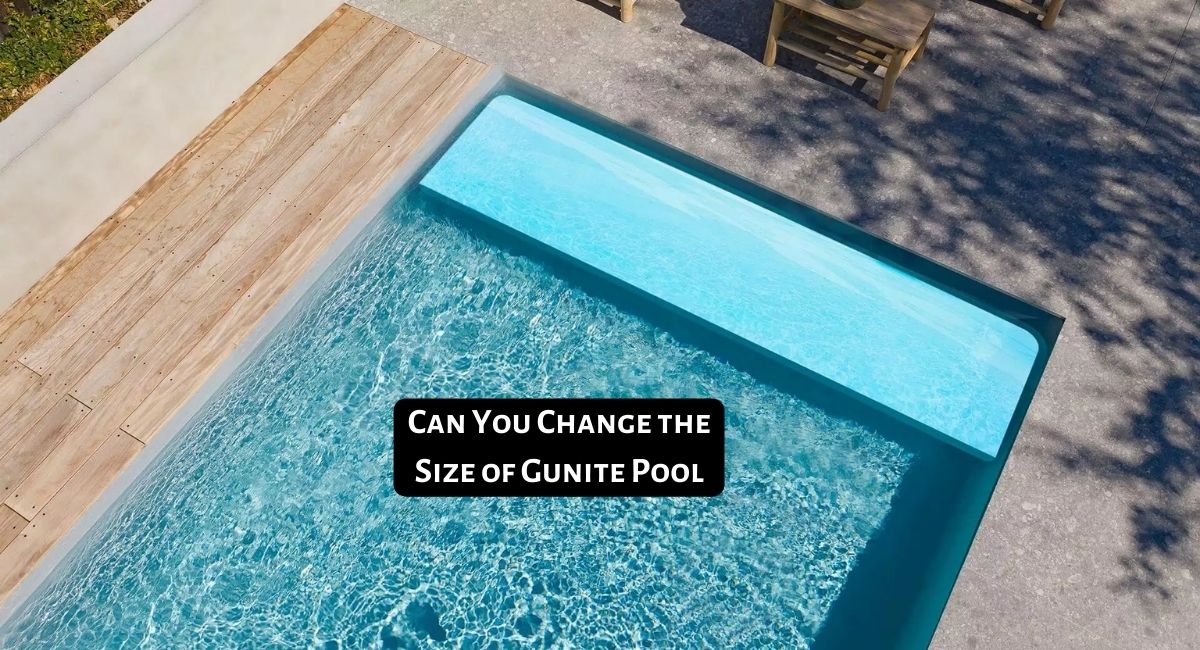
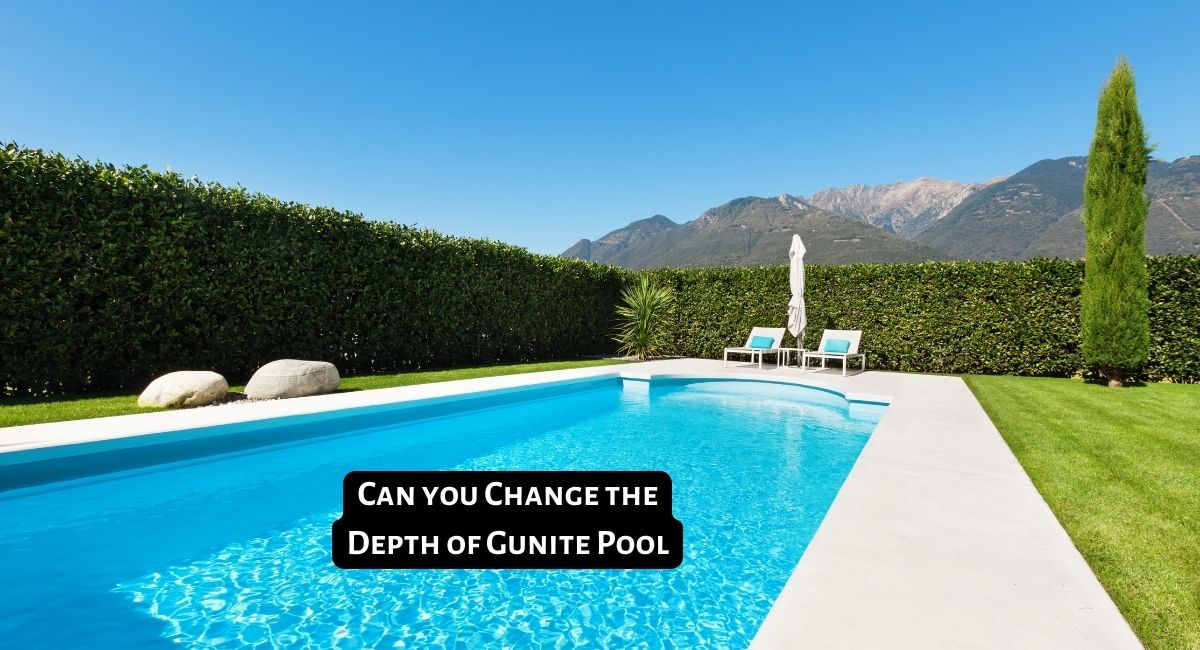
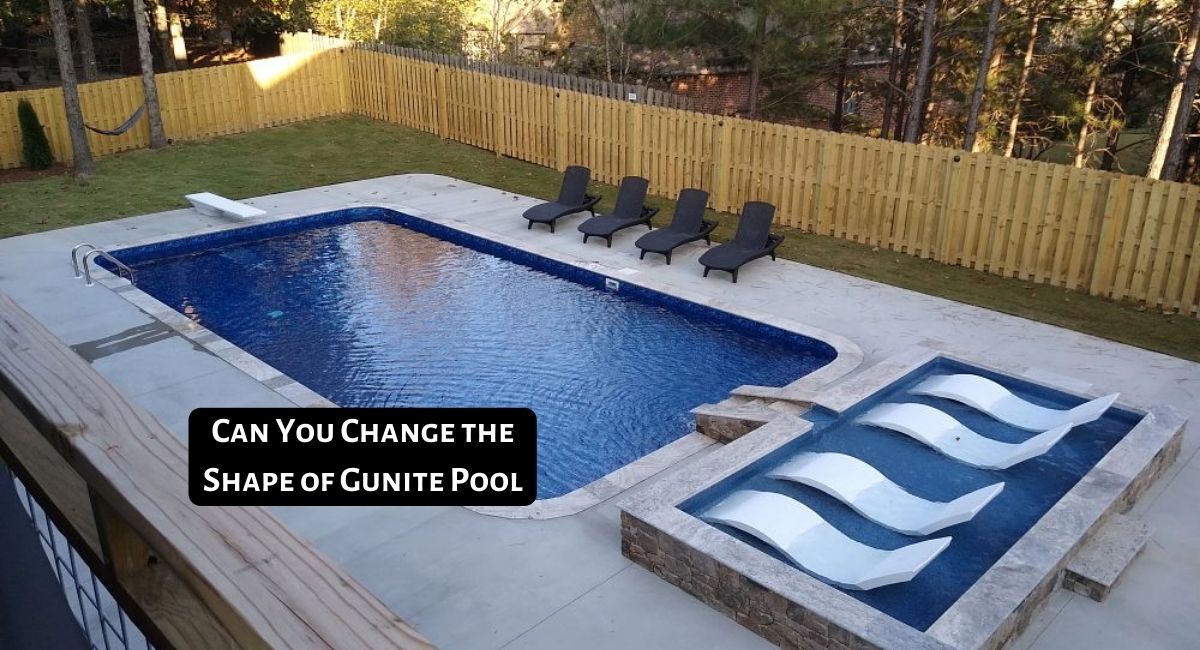


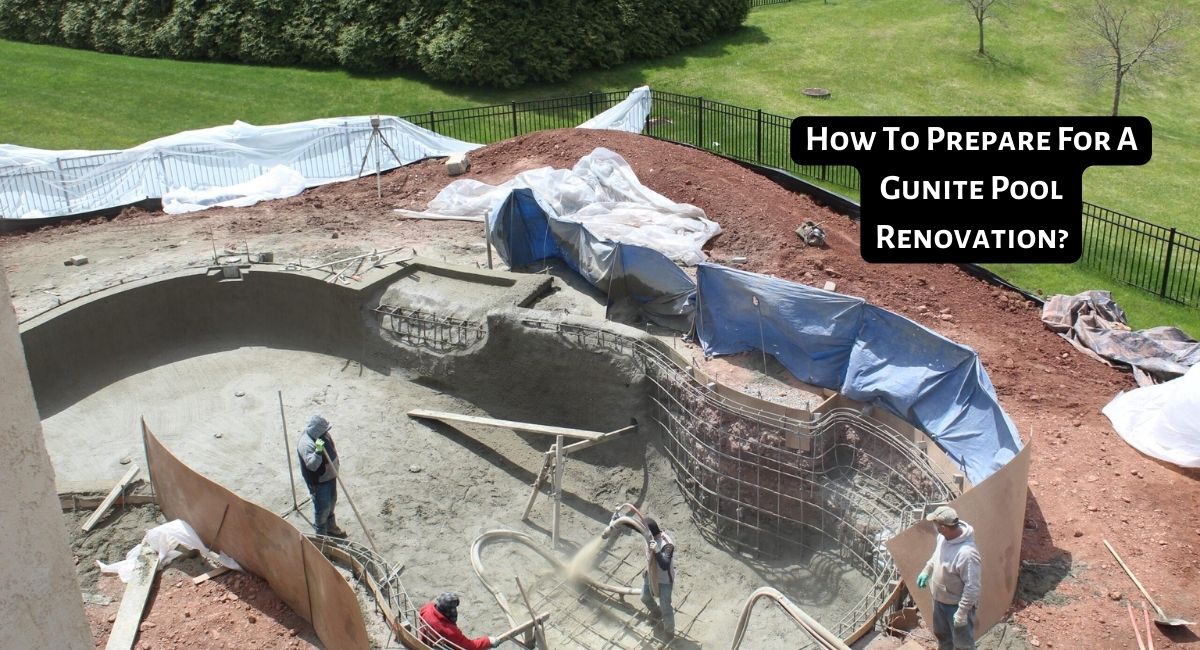
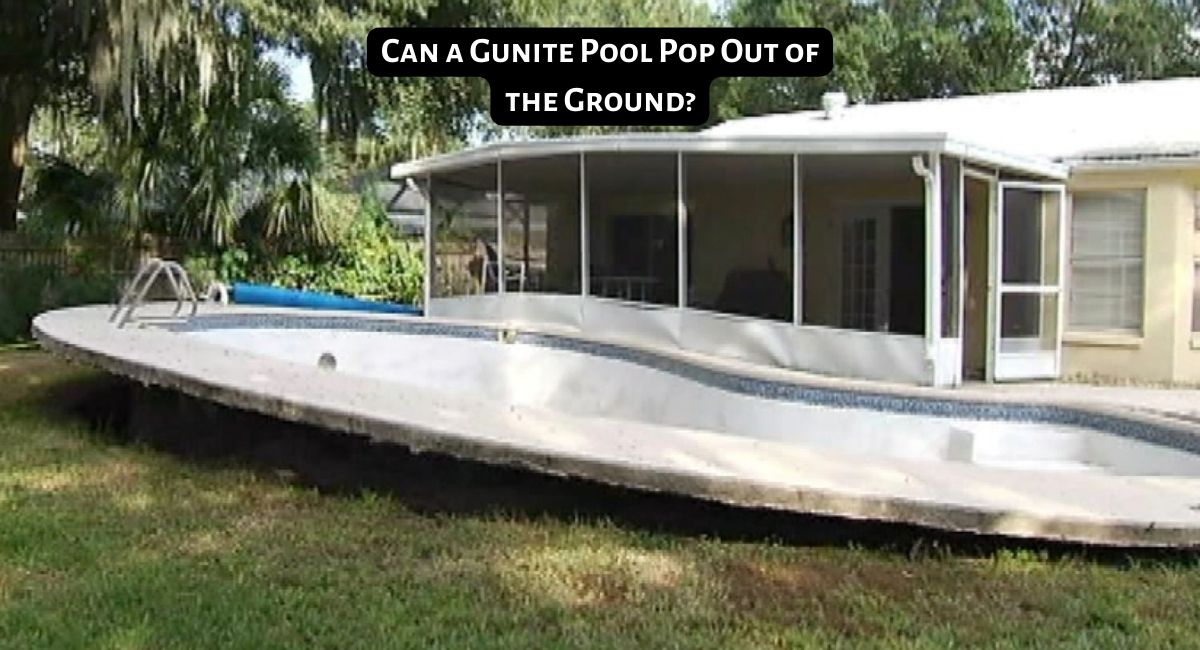
Can u call me ar 201388 0011
Looking to convert a liner to gunite pool
Ty